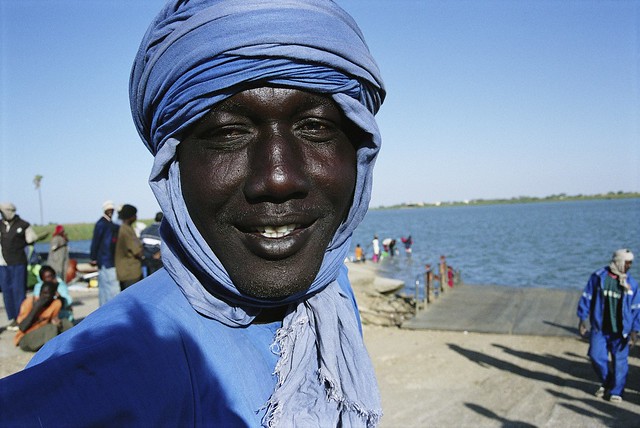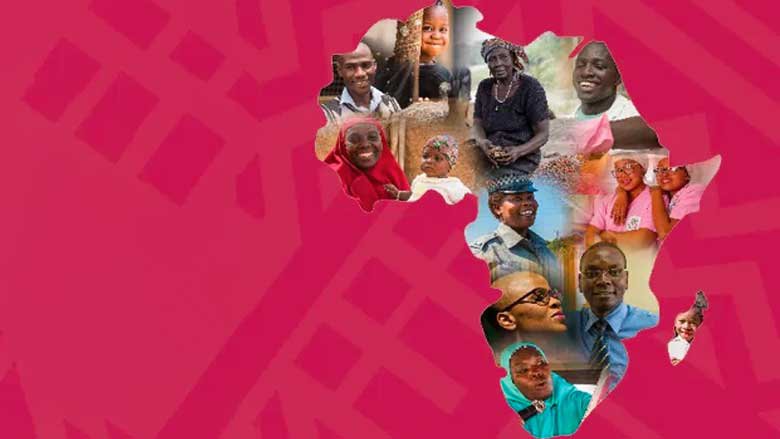Eswatini is a small, open economy bordering South Africa and Mozambique. The country has a population of around 1.2 million, with an estimated per capita (Gross Domestic Product) GDP of $4,089 in 2024. Slightly more than half the economy is concentrated in services, and industry (particularly manufacturing) comprises another third. South Africa continues to be EswatiniˇŻs main trading partner, accounting for about 65% of its exports and 75% of its imports.
Economic growth increased to 4.8% in 2024, from 3.4% in 2023, as most sectors performed well. Growth in agriculture benefitted in particular from an increase in sugar production, while manufacturing, especially soft drink concentrates and sugar, benefited from higher external demand. Mining expanded because of increased coal output and the reopening of previously closed shafts. Stronger external demand led to a 13% rise in exports, while higher SACU revenues supported domestic demand.
Inflation slowed from 5% in 2023 to 4% in 2024, as global inflationary pressures eased. Food inflation fell significantly (from 12.8% to 3.9%), but food insecurity remains a challenge, with 25% of the population estimated to be food insecure. The Central Bank lowered the interest rate by 50 basis points to 7.05% between September and November 2024, following South AfricaˇŻs policy rate trend.
The overall fiscal deficit rose to 2% of GDP in 2024/25, up from 0.1% in 2023/24. Increased expenditure, driven by a higher wage bill (after the government relaxed the hiring freeze), capital spending, and interest payments, outpaced the increase in SACU revenues. Public debt grew to 41% of GDP by the end of 2024, whereas arrears accumulated with the private sector were estimated at around 2.7% of GDP.
The current account surplus rose from 2.2% in 2023 to 3.8% of GDP in 2024, benefitting from higher SACU revenues and key commodity exports, which more than compensated for the increase in imports. Nevertheless, international reserves declined to 2.4 months of import cover in 2024 as the government used reserves to pay its external obligations.
Despite some progress, EswatiniˇŻs social indicators are lagging those of other lower middle-income countries. About 53% of the population live below the lower-middle-income poverty line of $3.65 per day (2017 PPP). The unemployment rate surged from 23% in 2016 to 35% in 2023, and job opportunities are concentrated in the informal sector. EswatiniˇŻs economy remains one of the most unequal in the world, with a Gini coefficient of 54.6 in 2016.
Poverty persists in part because of the lack of quality jobs. Without sufficient formal job creation, employment is concentrated in low value-added activities, such as subsistence agriculture, and low-quality jobsˇŞ40.8% of employed people are in the informal sector. Unemployment is high and rising. It is even higher among young people, with those between 15 and 24 years faced an unemployment rate of 56 % in 2023. Quality problems in education mean that young people lack the right skills to participate in the labor market. This undermines EswatiniˇŻs potential to effectively leverage its demographic dividend.
Inequality in consumption per capita and disparities in access to basic public services across income groups and geographic locations persist, although access is being expanded. Factors such as early education, parental education, place of birth, and place of residence explained 38.5% of consumption inequality in 2017.
Real GDP growth is projected at 5% in 2025, driven by both public and private investment. Medium-term growth will primarily by private sector-led energy-related and construction projects, and public sector mega-investment projects, such as the Mkhondvo¨CNgwavuma Water Augmentation Project, the International Convention Centre and Five Star Hotel, and the new Parliament building. These projects are supported by both domestic and foreign funding. The investments are expected to benefit sectors such as financial services, ICT, transportation and storage, wholesale and trade, mining, and manufacturing. Mining and quarrying are anticipated to continue expanding in 2025 and 2026, with double-digit growth driven by increased coal production and construction-related activities. Growth is projected to decline from 2026, with significant risks linked to both global and domestic developments. Downside risks include heightened global trade uncertainties impacting Eswatini through fluctuations in commodity prices, remittances, exchange rates, investment, and weaker growth in its main trading partners. Higher electricity and water tariffs and demand-pulled inflation linked to expected public sector wage increases are projected to contribute to an inflation rate of 5.6% in 2025. The fiscal deficit is projected to increase in 2025 and 2026 as SACU transfers are expected to fall by 20% in nominal terms in 2025. A higher wage bill and capital expenditure are expected to widen the fiscal deficit in 2025-26. The current account surplus is expected to decline due to reduced SACU revenues and higher imports from planned construction activities.
Development Challenges
Eswatini faces multiple development challenges to ensure inclusive, sustainable, and resilient economic growth. Central among these is a fiscally unsustainable public sector-driven growth model, which has trapped the country in a low growth and high poverty and inequality equilibrium and crowded out investments in productive sectors and the private sector. Fluctuations in SACU revenues have complicated fiscal management, and constrained long-term planning for growth-enhancing investments.
Access to credit for Small and Medium Enterprises (SMEs) is constrained by limited digitization of enterprise cash flows, weak secured transaction and insolvency regimes, high collateral requirements, and limited quality of credit information. Women-owned SMEs are particularly impacted by lack of access to credit. Access to credit continues to be one of the top three constraints to business in Eswatini. In fact, the highlights that 18% of all Micro, Small, and Medium Enterprises (MSME) -employing 5-19 people- consider access to credit a major constraint. Many women struggle to find access to credit to launch or grow their businesses. In 2020 only 13% of women-owned businesses accessed formal credit versus 19% of male-owned enterprises.
While gaps in infrastructure, notably in energy, transport, and Information and Communication Technologies (ICTs), stymie economic development, national and regional integration; tax rates, access to land; informal sector regulations/ practices as well as political instability are cited as impediments by businesses participating in a 2024 World Bank Enterprise Survey. Despite significant progress in bringing overall access to electricity to about 86%, in Lubombo access is only 60.6% and in Shiselweni only 63%, which constrains agriculture output and agro-processing in these mostly rural regions.
Energy security is a major concern as Eswatini imports up to 90% of its electricity from South Africa. To address dependency on power import, the Government of the Kingdom of Eswatini (GoKE) has recently updated its Generation Master Plan, which includes development of a significant coal plant (200-300MW) in the country along with renewable energy development to increase domestic installed capacity to 1GW by 2050. This would require a cumulative domestic capacity increase of about 700MW within 20 years.
While the governmentˇŻs expenditure on education (5% of GDP in 2021) exceeds the Low- or Middle-Income Country (LMIC) average and near-universal access to primary education has been achieved, education quality is insufficient; access and retention are low in secondary school; and the education system is not responsive to the labor market. In 2017, Eswatini was ranked 136 out of the 139 countries captured on the International Labour Organization (ILO) Skills Mismatch Index. Eswatini spends relatively more on health and education than its neighbors in the region. However, this spending results in poorer health and education outcomes than expected due to inefficient and inequitable spending.
High poverty (58.9%) and inequality (54.6 Gini coefficient) have persisted reflecting a scarcity of formal jobs outside the public sector, a weak business climate, limited economic opportunities in lagging areas, and insufficient growth-enabling infrastructure. Despite some progress, poverty remains high, particularly for a lower middle-income country (LMIC). Estimates in 2022 indicated that 54.8% of the population were below the LMIC poverty line ($3.65/person/day in 2017 Purchasing Power Parity). Human capital is impeded by high prevalence of stunting; low adult survival linked to a high burden of preventable illnesses and premature deaths, including from Human Immunodeficiency Virus (HIV); a rising burden of non-communicable disease (NCD); and gaps in the quality of education. EswatiniˇŻs sizeable youth populationˇŞmore than half of the population is under 25 years oldˇŞhas limited skills to compete in the labor market, jeopardizing economic opportunities and the countryˇŻs potential to benefit from a demographic dividend. Eswatini remains highly susceptible to external and climate shocks, including droughts. Gains in poverty reduction have been concentrated in urban areas.
Last Updated: Apr 17, 2025








